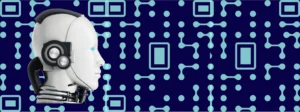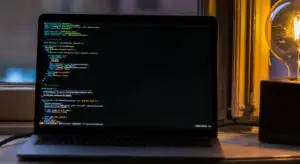It’s kind of obvious that practicing your code should involve a computer. But sometimes, you just don’t have it at hand. Is it possible for people to test out code without using any sort of technology?

✅ AI Essay Writer ✅ AI Detector ✅ Plagchecker ✅ Paraphraser
✅ Summarizer ✅ Citation Generator
Key Takeaways:
- The skill of mentally simulating code execution, akin to visualizing a story while reading, allows programmers to anticipate how code behaves without running it. Honing this ability through practice aids in early error detection and boosts code reliability.
- Manually typing code fosters a deeper understanding of its function and logic. Over-reliance on auto-complete tools or programming assistants can hinder true mastery, as it’s essential to grasp the reasoning behind each line of code rather than just using tools.
- While syntax is essential in programming, the primary goal is solving the core problem. Planning and understanding the broader solution, using tools like flow charts and pseudo code, are paramount for efficient, well-structured coding.
Understanding how to mentally simulate code execution is a valuable skill for anyone working in the world of programming. At its core, this means being able to imagine, step by step, how a piece of code will run without actually using a computer to test it. It’s a bit like a musician who can read sheet music and hear the song in their mind without playing any instruments.
One of the users on Reddit came across a problem with their own testing, stating that they usually do the “trial-and-error” method when doing tests and asked for advice.
The community immediately jumped on the thread with both tips and criticism. Let’s see what they were saying.
Mastering the Art of Mental Code Simulation
In the world of programming, there’s a unique skill that sets apart experienced coders: the ability to “run code in one’s head”. Imagine reading a book and visualizing the entire story without watching a movie; it’s similar for programmers when they look at code and can foresee its behavior without testing it on a computer. This mental ability doesn’t just appear overnight. It comes with lots of practice.
“If you practice, you can eventually begin “running code in your head”. I learned this mostly through debugging in my head by maintaining the values of different variables in my memory or on paper, and then stepping through and executing code as I think it should be executed. You can get pretty accurate with practice (and when you’re wrong, well, there’s the bug).”
As programmers work on more projects, they learn to keep track of how data changes by remembering variable values. Sometimes, they even jot down these values on paper, simulating each step of the code to see if it behaves as expected. However, this mental run-through isn’t always perfect. When a programmer’s mental simulation doesn’t match the expected result, it’s a sign that there might be a mistake or ‘bug’ in the code. Spotting these discrepancies early can save a lot of time later. Over time, with regular practice, programmers can sharpen this skill, making them more proficient and their code more reliable.
Manually Typing Code for Genuine Understanding
Typing code by hand might seem old-fashioned, especially with modern tools that can auto-complete lines or even suggest whole blocks of code. But there’s a deep value in manually entering each line. When you type code yourself, you think about each word, each command, and each function. It makes you question the purpose of every piece, asking “why” and “how” it fits into the bigger picture.
Auto-complete tools and programming assistants are undoubtedly helpful. They speed things up and can make coding feel smooth. However, if used too much, they might become crutches. Programmers might start relying on these tools without truly understanding what the suggested code does. It’s like using a calculator for every math problem without understanding the basic rules of math.
“For starters I would turn off all auto complete and for the love of god dont use copilot/chatgpt/etc. you need to force yourself to manually type out and understand what exactly is happening and why it needs to be the way it is.”
True mastery in programming doesn’t come from knowing how to use tools. It comes from understanding the core principles and logic behind each line of code. Writing code by hand rather than just copying it from somewhere creates a better learning ROI because students learn and remember it better in comparison. When you type manually, you become more involved, and this involvement fosters genuine understanding. So, even in an age of advanced tools, taking the time to type and understand each line can set a programmer on the path to genuine expertise.
The Essence of Problem Solving in Coding
In the world of programming, there’s often a lot of talk about syntax. Syntax refers to the set rules and structures we follow when writing code, much like grammar in a language. While getting the syntax right is certainly important, there’s something even more crucial: solving the core problem.
Imagine you’re learning a new language. Knowing the grammar is important, but if you can’t convey your message or understand others, the communication falls apart. Similarly, in programming, the main goal is to address a problem or task. Whether it’s building a new app or fixing a bug in existing software, the focus is on finding a solution.

In academic settings or even in real jobs, if you were to sketch out your solution on paper, minor syntax errors might appear. Maybe you forget a semicolon or use the wrong bracket. But many experts would overlook these tiny mistakes. One Redditor compared the skill of mentally running code to chess players who calculate moves in their minds without physically moving pieces and musicians who interpret musical notation without playing it. They emphasized the importance of practice, suggesting learners mentally simulate each step of code execution. For those struggling with this, they recommended physically writing out each step.
“The good thing is that most CS profs won’t really care if you have syntax errors with paper-written code. They mostly care about if you actually understood how to solve the problem question.”
Once you grasp the main idea, fixing small syntax issues is easy. So, while it’s good to know your syntax, remember that problem-solving is at the heart of great coding.
The Value of Planning Your Code
When learning to code or even when under tight deadlines, there’s a temptation to jump right in and start writing code. It might feel like progress to quickly type lines of code, hoping they’ll work. But this trial and error method can lead to many problems.
Writing code without a plan is a bit like trying to build a house without a blueprint. You might end up with walls and a roof, but the structure might be weak, or rooms might not fit together well. Similarly, code written on the fly can become messy, hard to understand, and might even have hidden errors.
“That’s not writing code by testing. That’s not even programming. That is clobbering something together by trial and error, patching it up, until something somewhat working is coming out. (…) You have to learn to plan your code.”
To build a strong house, you’d start with a clear design and plan. In the coding world, this means using tools like flow charts and pseudo code. These tools help programmers think through each step of their code before they start typing. It’s a way to see the big picture, understand the logic, and make sure everything will work together well.
In the end, taking a little time to plan can save a lot of time and headaches later on. It ensures the code is well-organized, efficient, and easier to update or fix in the future.
Short History of Computer Testing
The evolution of code testing hasn’t been easy. In the early days, it was mainly about fixing problems when they appeared. But as computer programs got more complex, the need for better ways to ensure they worked correctly became clear. This shift towards proactive testing had its challenges and took time to be widely accepted.
One of the users on Reddit mentioned how hard the testing was when they were a computer science student.
“In my very first college comp sci class, we were still running on a mainframe shared by the whole lab, working on dumb terminals. (I’m old). Every time you compiled, your priority went down — so if you went through multiple iterations, soon it was taking — literally — 30 minutes before your job came up. (“Compiling, Im going to get some coffee”).”
GeeksforGeeks compiled all major events in the history of computer testing. Around the late 1940s, computer scientist Tom Kilburn penned the earliest piece of software at the University of Manchester. This initial software was straightforward, executing mathematical tasks with machine code instructions. A few years later, in 1950, the Turing test was introduced, aiming to gauge a machine’s intelligence. By 1957, “debugging” was a popular method for software testing. However, this year marked a shift when Charles L. Baker emphasized the distinction between merely debugging and structured software testing. This realization pushed developers to begin testing their creations in actual-world situations, paving the way for quality assurance in software, a crucial component of the Software Development Life Cycle. By the following year, 1958, Gerald M. Weinberg established the first dedicated testing team, signifying the growing importance of this domain.
As you can see, even in this short period of time, computer testing underwent several changes and constantly grew. Nowadays, testing is essential to making sure software is reliable and does what it’s supposed to do.
All in all, in the world of coding, being able to think ahead and predict how code will run is a bit like a chef knowing how ingredients will blend before cooking. This skill of mentally simulating code can save a lot of time. Instead of constantly running tests, a programmer can predict possible outcomes and make changes even before hitting the ‘run’ button. Beyond just time-saving, this mental workout helps in spotting potential issues or errors in the code. Just like a well-thought-out recipe ensures a tasty dish, planning code execution ensures a strong and efficient codebase. It’s not just about typing quickly; it’s about thinking, predicting, and ensuring that the code not only works but works well. For any coder, nurturing this skill can make a big difference in their work quality and efficiency.
Follow us on Reddit for more insights and updates.





Comments (0)
Welcome to A*Help comments!
We’re all about debate and discussion at A*Help.
We value the diverse opinions of users, so you may find points of view that you don’t agree with. And that’s cool. However, there are certain things we’re not OK with: attempts to manipulate our data in any way, for example, or the posting of discriminative, offensive, hateful, or disparaging material.